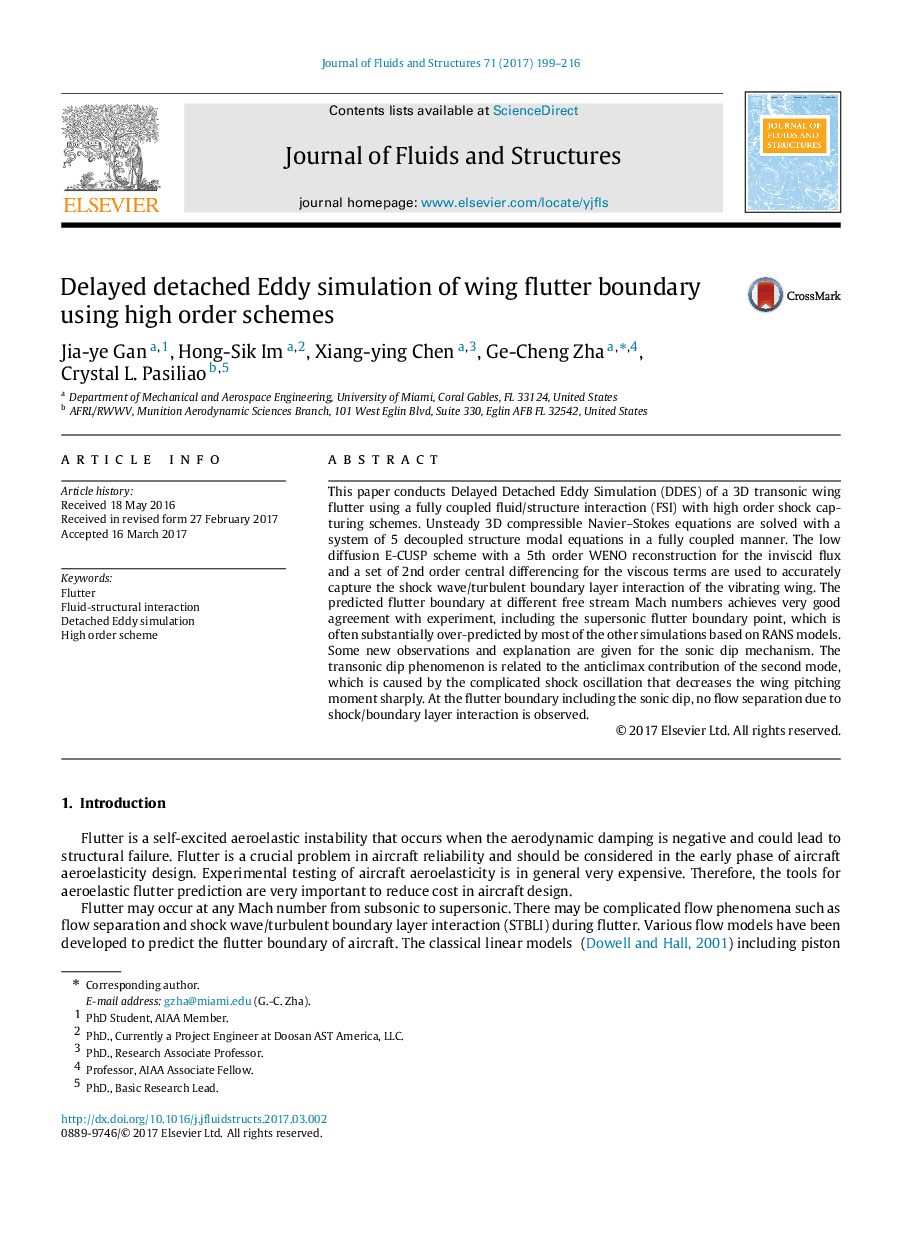| Article ID | Journal | Published Year | Pages | File Type |
|---|---|---|---|---|
| 5017472 | Journal of Fluids and Structures | 2017 | 18 Pages |
Abstract
This paper conducts Delayed Detached Eddy Simulation (DDES) of a 3D transonic wing flutter using a fully coupled fluid/structure interaction (FSI) with high order shock capturing schemes. Unsteady 3D compressible Navier-Stokes equations are solved with a system of 5 decoupled structure modal equations in a fully coupled manner. The low diffusion E-CUSP scheme with a 5th order WENO reconstruction for the inviscid flux and a set of 2nd order central differencing for the viscous terms are used to accurately capture the shock wave/turbulent boundary layer interaction of the vibrating wing. The predicted flutter boundary at different free stream Mach numbers achieves very good agreement with experiment, including the supersonic flutter boundary point, which is often substantially over-predicted by most of the other simulations based on RANS models. Some new observations and explanation are given for the sonic dip mechanism. The transonic dip phenomenon is related to the anticlimax contribution of the second mode, which is caused by the complicated shock oscillation that decreases the wing pitching moment sharply. At the flutter boundary including the sonic dip, no flow separation due to shock/boundary layer interaction is observed.
Related Topics
Physical Sciences and Engineering
Engineering
Mechanical Engineering
Authors
Jia-ye Gan, Hong-Sik Im, Xiang-ying Chen, Ge-Cheng Zha, Crystal L. Pasiliao,
